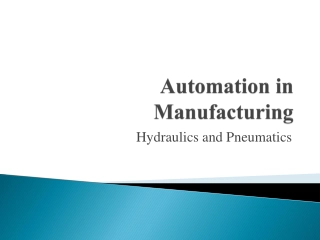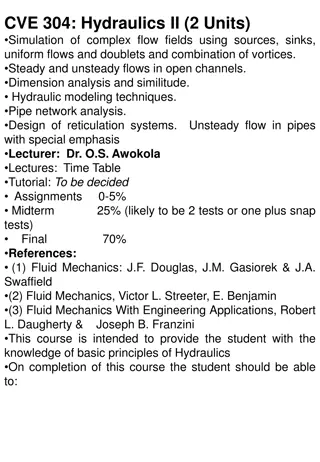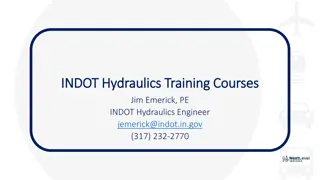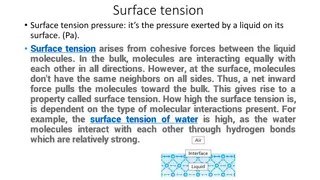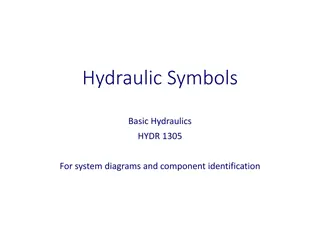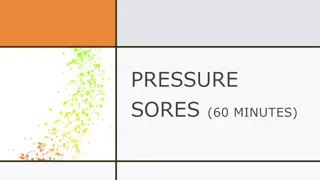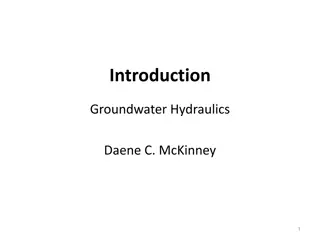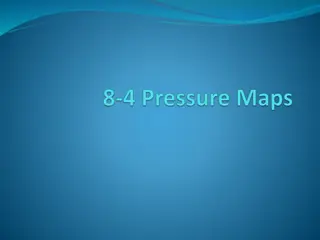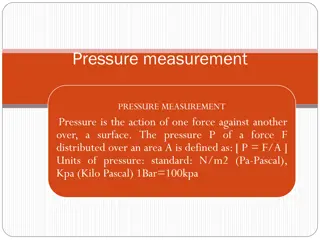Understanding Hydraulics and Liquid Pressure
Explore the concept of hydraulics and the use of liquid pressure in various applications, such as car brakes, car jacks, forklift trucks, lifts, bulldozers, and more. Learn how liquid pressure allows forces to be transmitted effectively, enabling the multiplication of forces through piston areas. Discover the working principles behind hydraulic systems, including brake mechanisms, and solve practical questions related to pressure and force calculations.
Download Presentation

Please find below an Image/Link to download the presentation.
The content on the website is provided AS IS for your information and personal use only. It may not be sold, licensed, or shared on other websites without obtaining consent from the author. Download presentation by click this link. If you encounter any issues during the download, it is possible that the publisher has removed the file from their server.
E N D
Presentation Transcript
Hydraulics and the use of liquid pressure
The important features of pressure in liquids Liquids will transmit pressure throughout the liquid, regardless of the shape of the container A force therefore can be applied wherever you want it The force can be multiplied according the the area of the pistons used to push down on the water
Examples of the use of hydraulics Car brakes Car jacks Fork lift trucks Lifts bulldozers Television cameras
How car brakes use hydraulics A small force on the brake pedal will act on a piston with a small area The small piston pushes against the brake fluid The pressure exerted is transmitted to all parts of the liquid The pressure acts against four bigger pistons with larger areas The large pistons will multiple the force and cause the brake pads to push against the wheels As pressure is transmitted equally throughout the liquid, each brake works evenly too
Hydraulic brake The diagram shows a simple brake where a pedal will push down on the smaller master piston The force pushing down will put the liquid under pressure The pressure is transmitted through the liquid and against the slave piston The pressure causes the slave piston to exert a force where it is needed
Using the formula P=F/A What is the pressure exerted on the liquid by the slave piston? Answer: Pressure = 10N / 5cm2 = 2 N/cm2 Calculate the area of the slave piston that will lift a 100N load Answer: Area = force / pressure = 100N / 2 N/cm2 10N Slave piston Master Piston Is 5 cm2
More questions on hydraulics Master piston = 10cm2 Slave piston = 100cm2 1. What will the force (F1) need to be to exert a pressure of 20 N/cm2 ? 2. Calculate the weight (F2) that can be lifted by the slave piston. Answers: 1. Force = 20 N/cm2 x 10cm2 = 200N 2. Force = 20 N/cm2 x 100cm3 = 2000N
Summary of the principles of hydraulics Pressure is transmitted throughout a liquid A force may be applied anywhere to the liquid All hydraulic systems use a small master piston and a large slave piston A small force is used to create a very big force The small master piston is used to apply a force The slave piston is always bigger than the master piston The larger slave piston will multiply the original force put on the master piston
This powerpoint was kindly donated to www.worldofteaching.com http://www.worldofteaching.com is home to over a thousand powerpoints submitted by teachers. This is a completely free site and requires no registration. Please visit and I hope it will help in your teaching.


